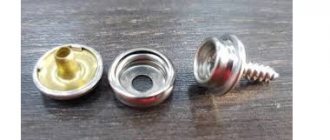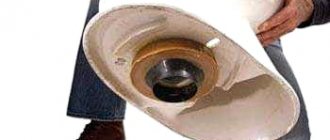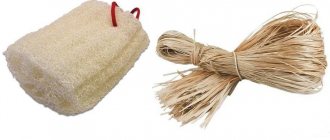During construction, renovation, and simply replacing plumbing, the question of how to properly install a toilet in a private house becomes a priority. Incorrect actions may result in a malfunction of the sewer system. Emergency situations are inevitable if the installation of a toilet in a private house is carried out without complying with the standards. The information given in this article on how to properly install a toilet in a private home will help you avoid mistakes when solving the problem. Of course, a plumber will deal with the problem quickly and efficiently. But installing a toilet yourself in a private house will be more profitable.
Basics of the wastewater system
If you are interested in installing a toilet with your own hands in a private home, you need to have a good understanding of the sewerage system. Drain pipes in country houses are usually cast iron. The internal and external surfaces of such products are covered with petroleum bitumen. This helps protect the pipeline from corrosion, as it reduces the negative effects of water. Thus, the installation of a toilet must be preceded by reliable sealing of the components of the sewer system.
When installing the structure into the socket, the gap that appears is covered with tow. In addition, at the final stage, treatment with a cement-sand composition is necessary. In the areas of connection to the sewerage outlet, siphons are fixed, performing the function of a water seal. They prevent the penetration of unpleasant odors into living spaces.
To work, you need not only detailed and understandable instructions explaining how to properly install a toilet in a private home, but also a certain set of devices and materials. During the installation process you will need:
- rags;
- coarse fiber;
- wrench;
- tank for mixing the solution;
- cement-sand mixture;
- corrugated adapter;
- silicone;
- drill;
- corundum stone.
First, you need to determine the method of attaching the plumbing fixture to the floor. If the room has a cement screed on the floor, the toilet can be connected using screws that are secured into dowels. Another method involves fixing plumbing fixtures to a board that is mounted into the floor. The wood must be strong enough - it is advisable to choose oak for this purpose. Anchors are attached under the board for secure fixation.
A simple way is to use nails. They are hammered in diagonally. The nails should protrude two centimeters above the plank support. During the work process, a depression is formed on the floor surface, which is filled with cement mortar, and a board is laid on top. When the part is firmly fixed in the cement, you need to secure the toilet with screws. In this case, the screws should be treated with solid oil so that they do not turn. Then you need to hide rubber washers under the fastener heads. This way you can avoid deformation of the toilet frames.
Another installation technology involves the use of epoxy glue. To do this, the surface is thoroughly cleaned and degreased.
Then it is roughened by treating it with corundum stone and degreased again. A layer of resin five millimeters thick is applied to the area where the product is attached. Then the plumbing fixture is installed and securely pressed to the floor surface. It is not recommended to use the toilet within 12 hours after installation. You need to let the glue harden. Epoxy glue has a rather pungent odor, so it is better to leave the room for a while after completing the work.
One of the important requirements is reliable connection of the product to the sewerage system. One part of the plumbing point is completely connected to the drainage system. This is the so-called water release. There are direct and oblique releases, depending on the installed system.
The release grooves are covered with a special mixture of red lead and drying oil, then tow is wound around this area. Remember that it is unacceptable for parts of tow to penetrate inside the pipes, as this can cause blockage.
The sewer socket should be cleaned of the remnants of the previous sealant, after which an outlet is installed into it. The annular hole must be covered with flagella from linen yarn. At the next stage, this gap is covered with cement mortar. All seams are also processed.
Connection to plastic sewer pipe
Modern construction technologies involve the use of plastic pipes for sewer systems. And the question often arises about methods of connecting the toilet to the plastic part of the sewer system.
Types of connection of plastic pipe elements:
- Gluing method. This method involves connecting two parts of different diameters using special glue. But the difference shouldn't be big. The method involves degreasing the surface of the parts to be joined, then applying glue to the smaller part and inserting it into the larger one. Excess glue comes out of the gaps between the two parts.
- Application of welding technology. This installation method requires a professional approach. This method of connecting to a sewer riser involves the use of special equipment that heats plastic elements. The parts are heated, then pressed tightly against each other until the seam cools completely.
- Method of using fittings. This method requires the purchase of additional parts that are used to connect plastic elements.
Required Tools
Before you begin installation, you need to carry out all the preliminary work and select tools and materials in advance.
For installation you will need:
- toilet of the chosen design;
- hammer drill;
- screwdriver;
- set of wrenches;
- hammer;
- screws;
- rubber gaskets;
- dowels;
- pipes for connecting to the sewer: plastic, fan or corrugated;
- plumbing silicone grease.
In addition to these tools, you may need:
- pencil for marking the place;
- a special board for fastening - taffeta, especially for installation on an old wooden floor;
- if the toilet is going to sit on glue, then epoxy glue is needed;
- emery for polishing the surface;
- For final processing you need red lead and tow.
Installation on a wooden floor
Having marked the installation location of the toilet and the connection to the sewer drain, you can proceed directly to work:
- We select the pipes that will attach the toilet to the sewer system.
- We assemble the entire structure and install the pipes.
- On the floor we mark the exact mounting locations for the toilet.
- When installing a sewer drain vertically, you need to mark and drill a hole for the pipe.
- If you plan to use taffeta - a special oak panel, then now you need to prepare it. The taffeta is treated with an anti-corrosion protective compound, and the places of fastenings are marked on it.
- A cement layer is installed between the floor and the panel. The rest of the work can only be done after it has completely hardened.
- Next, the toilet is attached to the taffeta with screws. It is better to pre-treat the screws with a special lubricant. To protect the structure, rubber gaskets are used.
Ventilation
Ventilation in a private residential space is mainly taken into account during the design: in the bathroom, toilet and dining area there are hidden ventilation shafts with decorative grilles. If the toilet is located on the lower floor, there is no need for artificial ventilation. Often there are several bathrooms, in which case it is necessary to install forced ventilation with air ducts.
Ventilation in the bathroom
A hood in a bathroom in a wooden private house has additional loads, so the requirements placed on it are serious. This material is greatly affected by increased humidity levels, so you need to install a hood and additional ventilation ducts. You should not use air conditioners because they make the air dry, causing cracks to form on the wood.
You may be interested in: Important points when planning a children's room for two children
How to attach a country toilet
Now we are not talking about standard ceramic products, but about those that are made specifically for wooden toilets. They do not provide for connection to the sewer, but are installed above the hole in the cesspool. They also do not flush. They simply represent a ceramic seat of the usual shape. They differ from the standard ones by having a larger hole/outlet downwards. This is done to minimize the possibility of contamination of the walls.
What is the problem
The difficulty is not how to fix the country toilet, but how to make sure that waste does not fall on the floor. The whole difficulty of installing a country toilet is that there remains a gap between the outlet and the wall of the toilet. And if you simply place it on top of the hole, some of the waste will fall onto the area of the floor under the toilet and then flow out from under it.
Even if you seal the joint with sealant, this will not solve the problem. The waste will remain on the floor area and will “smell” accordingly. That is, when installing a country toilet, you need to build an “adapter” that will prevent the leakage of sewage.
What can be done
There are several ways to make the transition - the outlet of the country toilet / the hole above the cesspool - airtight. They are of varying degrees of difficulty, so you choose for yourself what is best for you to do. The first idea is to make a funnel with the bell facing upward. This will allow you to close that same free area. This transition can be made from different materials:
- Choose a plastic bowl, plastic flower pot, baby bucket, etc. Cut out the bottom of a vessel selected to size. Install the resulting socket with the flared part up. This is if the septic tank pipe is smaller in diameter than the toilet hole. When installed, the outlet will rest against the walls of the plastic funnel. After checking the size match, coat the joints with silicone and leave the entire structure motionless until the sealant polymerizes.
- Cut a strip of tin and make an “adapter” out of it according to the required size and shape. Secure to the boards with self-tapping screws or nails, and to the porcelain/earthware with sealant.
- Make a “cuff” along the edge of the cutout in the floor. To do this, you can nail a strip of tin, a PVC window strip, a strip of plastic, etc. around the perimeter. The strip is stuffed so that the bottom edge is approximately 1 cm below the edge of the board. The top one should protrude so much that the bottom edge of the toilet outlet is at least a centimeter lower. Based on this, choose the width of the strip.
Actually, other materials can be used. The main thing is to make sure that waste does not fall on the floor
How this can be achieved is not so important
It’s a little more difficult if the toilet inlet is not round. In this case, either use a tin adapter that can be riveted, or use a hair dryer to heat the plastic of the vessel and give it the desired shape.
Removing the old toilet
Dismantling the toilet
First step. Turn off the water supply and drain all the liquid from the tank.
Shut off the water
Second step. We unscrew the hose through which the tank is connected to the water supply.
Disconnect the hose
Third step. Unscrew the tank fasteners. If they are rusty, we arm ourselves with a screwdriver or open-end wrench. We press the bolt head with the selected tool and unscrew the nut using an adjustable wrench. If that doesn’t work, pre-soak the nut with kerosene. We remove the tank.
Fourth step. We dismantle the toilet mountings.
Fifth step. Disconnect the toilet flush from the sewer.
Corrugation is easy to remove
In older buildings, drains are usually secured using cement coating. To destroy it we use a hammer and chisel
We need to crack the cement and carefully rock the toilet to the sides. The drain should turn and become loose
We tilt the product, allowing the remaining water to drain into the sewer.
Dismantling the toilet We loosen the seal, if there was one. If the toilet had an outlet to the floor, you need to clean off the wax ring
Sixth step. We close the sewer hole with a wooden or other suitable plug.
While work is in progress, plug the hole with a rag. Dismantling the toilet.
Conclusions and useful video on the topic
To better understand the instructions described above, it is recommended that you watch the following video review:
It is not difficult to connect the toilet to the sewer system yourself. To do this, it is advisable to buy in advance a model of equipment that will fit most aesthetically into the interior of the bathroom.
With a minimum of tools, sealant and correctly selected connecting parts, you can install the toilet using the above instructions in a few minutes.
Do you have practical skills in installing and connecting a toilet to a sewer? Please share your knowledge, experience with our readers or ask questions. The comment form is located below.
Mounting options
When considering the question of how to install a toilet on tiles with your own hands, you should understand that it is possible to perform open and closed fastening. In the first fixation option, the fastening bolts are placed on the protruding part of the toilet base; in a closed system, they are placed inside the base of the toilet.
We fix the toilet using an open method
The simplest and most affordable option for securely mounting a toilet is an open one, since it reduces the cost of time and effort, but is inferior in aesthetics to the second mounting method. The toilet is mounted in the selected permanent location, then using a pencil, marks are drawn on the tile for holes intended to fix the structure.
In addition to the marked points for fastening, you should draw the outline of the base of the structure on the tile and make holes at the marks. First, use a core to scratch the glaze onto the tile. This is done so that the subsequently used drill does not slip on the surface of the tile. First, take a glass drill to go through the tile. Next, using a hammer drill, a hole of the required size is drilled using a concrete drill.
The hole needs to be cleaned of dust and then filled with silicone sealant. This material acts as a reliable waterproofing material. The dowels are inserted into the holes filled with sealant. Before installing a toilet on the tile, a strip of sealant must be applied along the outlined contour of the structure to prevent water from penetrating into the base of the toilet.
At the last stage, bushings, bolts or screws are inserted into the mounting holes and tightened. This must be done very carefully so as not to overdo it. Otherwise, a crack will appear in the toilet. Also, before the final effort, you can check how firmly and correctly the toilet is attached. Don't worry that the screw will spoil the overall appearance of the toilet. The mounting points can be covered with plugs to give an aesthetic appearance. Usually such parts are included in the kit. If they deteriorate over time, you can easily replace them with new ones purchased at the construction market or at a plumbing store. Remove excess silicone using a rubber spatula. The whole process of work can be made more understandable if you watch a video on how to properly install a toilet on tiles.
Installing an internally mounted toilet
When choosing a closed toilet mounting system, it is worth finding out whether it is possible to install the toilet on tiles in this way. It turns out it is possible. First of all, it is necessary to make outlet openings to connect the equipment to the water supply and sewerage system. These holes must be located as close as possible to the toilet being mounted. Similar to the open installation of a structure on floor tiles, you need to outline the outline of the base and then transfer the marks for the holes.
Hidden installation of a toilet on a tiled floor involves first rigidly attaching the connecting structure to the floor. After this, the toilet is installed on it and through the existing side holes it is bolted to the base.
A video of installing a toilet on a tiled floor tells more about this option.
However, there are situations when the floor cannot be drilled due to the installed heating system. Then, to solve the problem, you have to glue the toilet to the tiles. For this work you need to use special glue, epoxy resin with a special hardener or liquid nails. In all cases, preparation of the tiles and the bottom plane of the toilet structure is necessary.
These elements are processed with sandpaper to roughen the surfaces in order to improve the adhesion of the adhesive to the toilet and floor. To understand the installation logic, we recommend watching the video of installing a toilet on tiles.
Read also:
— Installing a washing machine with your own hands — You can rearrange the wall-hung toilet after installation or not — Sink faucets in the bathroom - design options — Private house — heating installation and pipe laying options — Installing an expansion tank for closed-type heating — Video tutorial: how to install a toilet with your own hands with a description
The need to replace the toilet
It is not always necessary to change a plumbing fixture if there are malfunctions in the sewer system. If water is constantly leaking from the tank in the bathroom, this is a serious reason to think about it.
When it drips onto the floor, and all the pipe connections are in order, then the cause of the problem is usually a chip or crack. In this situation, it is possible to eliminate the leak only temporarily; the toilet should be replaced as quickly as possible.
If water from the drain tank flows into the sewer along the wall of the bowl, then, most likely, the installation of new plumbing fixtures will not be necessary, since the cause of such a malfunction is most likely a leaky valve. Since all internal elements for flush tanks are sold separately, they only need to be replaced with new products.
Plumbing faience and porcelain are rather fragile materials that are characterized by instability to sudden temperature changes. The enamel can become covered with a network of cracks, spoiling the external aesthetic component of the device and threatening complete destruction of the bowl. If this product develops chips or other problems, the toilet should be replaced as soon as possible.
None of the toilet users can know for sure when the ceramic coating on it will not withstand and will burst under the influence of water currents, the weight of a person or as a result of internal stress. It’s good if the residents are nearby at this moment and one of them can quickly eliminate the emergency situation, otherwise the toilet of the neighbors living on the floor below will need to be repaired.
Another sign of a plumbing problem is the presence of an unpleasant odor. Most often, it is caused by improper installation of the sewer system, as a result of which the drainage stagnates in the pipes. When everything turned out to be in order with the pipeline, and the earthenware is clean, the cause of the smell should be sought in the fact that the glossy coating has begun to deteriorate.
If the integrity of the enamel is damaged and the porous structure of the sanitaryware begins to come into contact with impurities, it begins to absorb unpleasant “odors.” It will not be possible to cope with these odors, since the destruction process is irreversible. In this case, it is impossible to do without replacing the old toilet with a new one.
Another important reason for dismantling old and installing new plumbing is the planned renovation of the bathroom. Few property owners decide to keep the same fixture when changing the design of their bathroom. Since new, more modern products appear on sale regularly, updating a bathroom with replacing plumbing fixtures can transform its interior beyond recognition
Regardless of whether you choose a classic option or an unusual model from the catalog, the process of how to properly change a toilet occurs in the same sequence
Since new, more modern products appear on sale regularly, updating a bathroom with replacing plumbing fixtures can transform its interior beyond recognition. Regardless of whether you choose a classic option or an unusual model from the catalog, the process of how to properly change a toilet occurs in the same sequence.
How to make a toilet in a private house
When planning the location of the bathroom, the ideal choice would be a ready-made room, for example, a small pantry. Especially if it is located close to the drain well. If there is free space only on the opposite side, the task becomes more difficult. It is possible to install a toilet in it, but the amount of work and cost will increase. You can make a combined toilet in a small room with a regular bath or shower and a washing machine.
If there is no suitable place, a bathroom in a wooden house is even placed in the dining area, fencing it off with a solid partition and making the entrance in the adjacent wall. The building materials are chipboard, lining, plasterboard, etc. Soundproofing material is needed between the layers of sheathing.
Before installing a toilet in a private house, it is necessary to level and strengthen the floors, and then lay linoleum. In the case where the neck of the pipe is higher than the toilet outlet, it is worth raising it a little. A wide board or pieces of timber act as a podium. If the floor is concrete, cement and brick. The wood should be carefully painted and covered with drying oil.
Usually a direct connection to the sewer is possible without problems. A cuff with a sealing ring is inserted into the pipe, and the toilet outlet is inserted into the cuff. In case of difficulties, you need to use a plastic eccentric or a corrugated cuff
It is much easier to connect to the fecal pump, since the outlet is located at a standard height and everything important for docking is already there
When the toilet is placed in the chosen place and fits well with the sewer, you need to mark the holes. Then you should remove it and start drilling the floor. A mounting kit is often included. It includes screws, washers, dowels, caps.
Afterwards you need to put the toilet back in place and check it with a building level. If it is not level, you should correct the situation by placing something solid under it. Finally, you need to fill the gap with cement. If the toilet is installed on a podium, it should be leveled at the creation stage.
How to make a cesspool in a private house?
Let's consider the basic principles of arranging a sealed cesspool in a private house. Its mechanism of action is the flow of wastewater through pipes into a special sealed container. They remain there until they are pumped out by a sewer truck. For five family members you need to allocate 8 cubic meters of pit. If water procedures occur frequently, the washing machine and dishwasher are constantly running, you need to pump out the contents of the drainage hole three times a month.
You may be interested in: Possibilities and options for redevelopment of a two-room apartment
Features of a sealed cesspool device:
- The design of the storage tank can be of various types: a sealed well made of concrete, a factory-made container made of plastic;
- Plastic containers are considered more airtight than wells. An excellent choice would be a Eurocube, a 1000 liter tank with a tray made of wood or plastic. They are lightweight and low cost;
- The ventilation outlet should be installed at a height of 10 cm and placed 70 cm above the surface level;
- Then you need to lay the sewer pipes. You should look to see if there are trees along the way - they will prevent access to the pipes if repair work is necessary. Pipes should be placed below the depth at which the soil can freeze. If this is not possible, the pipeline should be insulated to prevent freezing.
What will you need?
As mentioned above, it is necessary to prepare in advance for installation. Below are the basic elements needed to get started.
1. Plumbing fixture. Naturally, you won’t be able to start without a device. Connection components must also be present.
2. Taffeta. A distinctive element in the process of installing a toilet on a wooden floor. This is the base located under the plumbing. A board or plywood measuring 0.5 x 0.5 m is suitable. The main requirement will be strength and moisture resistance. Protects the floor from the harmful effects of the toilet, i.e. rotting.
3. Hardware. It is enough to stock up on self-tapping screws of suitable size. There is no need to drill into the concrete base, which greatly simplifies the work. Additionally, you can use liquid nails.
Is taffeta necessary?
A step-podium of a box-shaped structure made of boards or sheet material (chipboard, plywood, OSB) is called taffeta. This device is recommended to be installed under the toilet, justifying its use for the following reasons:
- increasing the height of the plumbing fixture - some users find it more convenient to have a high toilet seat; the sewer tee may be higher than the toilet outlet;
- protection of the boardwalk from rotting - moisture gets on the taffeta, and not on the wooden floor; if the wood rots, this device can be replaced.
Installing plumbing fixtures on taffeta does not provide any benefits.
Currently, both of these problems are easily solved by constructive methods:
- it is easier to install plumbing fixtures on the installation, hanging the toilet at the required height, and at the same time dramatically increasing the quality of living and facilitating wet cleaning of the toilet;
Hanging sanitary ware on the installation allows you to not depend on the material and design of the floor. - Replacing taffeta is no easier than replacing planks; the plumbing will still have to be dismantled, but the difficulty of cleaning increases at the interface between the step and the floor and toilet, and access to metering devices and shut-off valves, usually located behind the plumbing fixture, becomes more difficult.
Even replacing a high tee of a sewer system with a lower analogue will cost less than making a stand and replacing it regularly, and will solve the problem forever.
Thus, when using a wooden floor in a bathroom, installing a toilet is not difficult; in many cases, it is cheaper and easier than installing it on a screed lined with tiles or porcelain stoneware.
Luxury country toilet
I built an outdoor toilet for my wife and daughter. Well, I didn’t forget myself. I didn’t waste time on trifles. If you build, then build it right!
The user divided the construction of an outdoor toilet into stages:
- I dug a hole and lowered two barrels with a volume of 200 liters into it. The barrels were stacked on top of each other. There is no bottom or lid. I cut slits in the bottom barrel in a checkerboard pattern. Gravel 10-15 cm thick was poured from below.
- Marked out the foundation for the country toilet. Base size – 2500x1500 mm.
- The strip foundation was poured. I laid a beam with a cross section of 10x10 cm on the concrete. For waterproofing, I laid roofing felt.
- Installed the frame of an outdoor toilet made of timber. The height of the main posts is 2000 mm. A 5x5 cm block was used for the jib.
- For the rafters of the country toilet, the user took a 50x50 mm block. The pitch of the rafters is 400 mm. The lathing is a board 15x2 cm. The floor is covered with a board 3 cm thick.
- Mrreanimatolog insulated the country toilet with stone wool. The inside was lined with clapboard. Outside is a block house. I installed a washbasin, a sink and a “faience friend” like a country toilet.
The ventilation pipe goes behind the toilet. Then it passes under the floor and comes out directly above the barrel. A vent pipe is mounted on the wall. I made ventilation holes around the perimeter of the foundation from a pipe with a diameter of 5 cm. This provides additional ventilation. Therefore, there are no unpleasant odors in the toilet.
At the end of the work, the user completed a porch 700 mm long. Covered the roof with corrugated sheets. I cut in windows measuring 50x50 cm and installed a homemade door.
The operation of the country toilet proved the functionality of the design. Among the modifications, the user installed the toilet with silicone sealant. This eliminated leaks where the toilet was installed on the floor.
How to choose a toilet
Installing a toilet in a private house with your own hands is associated with certain costs and you want them to pay off in terms of convenience.
- Economy class;
- middle class;
- luxury plumbing.
Luxury plumbing parts are designed to last a long time and will not simply break. When buying an expensive item, you can be sure that it will last a long time.
Another parameter is the color scheme. In large supermarkets you can choose any shade and implement the most daring design solutions.
Models available for sale:
- made of natural stone - durable and reliable, service life is unlimited;
- glass - completely transparent or with a pattern;
- earthenware;
- ceramic;
- metal;
- porcelain, which can last up to 50 years;
- plastic.
When purchasing, you need to carefully look at what is included in the equipment package. It may happen that the bowl and tank are sold separately.
In addition to external characteristics, you need to pay attention to:
- to the height of the equipment;
- type of construction – suspended, floor-mounted, wall-mounted floor;
- what type of flush - reverse or direct;
- The method of draining the tank is one or two button.
Wall-hung plumbing will cost more, but the structural elements will be hidden in the wall, which will save some space in the room. Backwash is of better quality because it washes the bowl completely. Two-button flush allows you to save water.
Hanging models
Recently, hanging varieties with installation have become increasingly popular, the connection methods of which involve hanging the bowl on a false wall and placing a cistern behind it. To do this, a strong metal vertical frame is mounted behind the wall, threaded studs with nuts are removed from it to hold the bowl, and a plastic drain tank is placed inside the frame; a button is placed on top of the wall to turn on the flush.
The advantages of a hanging design are space saving in a small toilet, aesthetic appearance, ease of cleaning (the floor is easier to clean under a hanging bowl).
What should a master expect: the main stages of construction
When thinking about building a bathroom in a wooden house, you should immediately decide that the plumbing must have access to the sewer or at least to a cesspool. Water must also be connected for the bathroom to function fully.
The arrangement of this zone in a wooden structure has its own characteristics and even some difficulties. But they are easy to overcome if you do everything according to the established sequence.
The construction of the bathroom should take place in the following order:
- Sewerage installation. This is an initial and very responsible activity. If problems arise with the sewerage system, construction may be delayed. In a house that does not have access to a sewer, cesspool or sewage treatment plant, it will be impossible to create a bathroom. The only solution in this case is to carry out sewerage or dig a hole yourself.
- Ventilation. Without it, it is also impossible to carry out hygiene procedures fully. This requirement is easier to fulfill; the main thing is to think about how to arrange everything correctly.
- Waterproofing installation and plumbing installation. This is also an important stage. If you ignore the installation of waterproofing, then over time the wood will deteriorate due to high humidity. It is also better to purchase high-quality plumbing fixtures. It will last much longer and you won’t have to injure the wooden base to carry out installation and dismantling.
- Selection of design and finishing work. In order not to become hostage to one image of a wooden house, you can use the services of an interior designer or come up with everything yourself, inspired by ideas from the Internet or an architecture and design magazine.
Work must be carried out strictly according to plan. You can’t do ventilation without understanding the sewage system, etc.
Also, before starting, you need to consider a few truths about wooden houses:
- Over time, the house shrinks. Therefore, it is better to purchase metal-plastic or plastic pipes so that in case of deformation they can withstand the pressure.
- To secure the pipeline, use special clips.
- A sliding frame is a special technology that will allow you to build a bathroom in a wooden house without complications.
Installation procedure for external sewerage
You can also make the external system yourself. The assembly principle is the same, and the diameters of the outer pipes are the same as the main riser passing through the toilet. To lay pipes, trenches must be developed.
If for some reason this is not possible, the pipes will have to be insulated. I know people who haven't done this and are fine, and I know people whose frozen drains have damaged their pipes. So it’s your right to decide whether to insulate or not.
We prepare the bottom of the trench with sand and crushed stone and build an external route to the treatment plant.
Check it out and choose the option that suits you. The depth of the pit for the treatment plant will depend on the estimated amount of internal sewerage and maintaining the slope of the external route, at least 30 mm per meter of pipe being laid.
In places of turns and complex connections of pipes (tees, crosses) of external sewerage, it is necessary to provide inspection wells. They will help monitor the degree of contamination of the system and through their inspection holes, the system will be cleaned with water under pressure.
Before filling the trench, the system must be tested. To do this, we head to the toilet, fill the bathtub and sink, and at the same time open the drain holes. If no leaks are found, we dig and compact a trench.
Construction of a toilet for a summer house: drawing with dimensions for a “birdhouse” type structure
The design of the Birdhouse consists of wood, which can be covered with any other type of material. Construction of a single or gable roof is allowed. This type of closet is mounted as an above-ground building above the cesspool.
Typical design of a “Birdhouse” with dimensional parameters:
| Design element | Size, m |
| Rear wall (height) | 2 |
| Width | 1 |
| Front wall (height) | 2,3 |
| Base area | 1x1 |
When installing a wooden toilet structure, mandatory control of the placement of surfaces vertically and horizontally is necessary. For these purposes, it is recommended to use a building level.
Drawing of the Birdhouse toilet: 1 - frame, 2 - stand, 3 - door, 4 - handle, 5 - door crossbar, 6 - front wall, 7 - roof rafters, 8 - roof, 9 - ventilation riser, 10 - deflector, 11 — side wall, 12 — cesspool cover, 13 — brick supports, 14 — rear wall
Materials for the construction of the Birdhouse
To carry out the work, make sure you have:
- roofing felt - in the amount of 2 m?;
- concrete curb (2 pcs., length - 2 m) or sand-cement block (4 pcs.);
- door block (2000x900 mm);
- sand;
- linings (40 pcs., 87x3000 mm);
- edged boards (4 pcs., 50x100x6000 mm; 3 pcs., 32x90x6000 mm);
- profile sheet made of galvanized steel (2000x1520x0.4 mm);
- wooden beam (1 pc., 50x50x600);
- components for the door (latch, hinges, handles);
- fasteners (screws, nails);
- material for the finishing coating (varnish or coloring composition).
Toilet “Skvorechnik”, photo 1: preparation of materials and installation of the frame
In order to insulate the structure, you should purchase polystyrene foam. After construction is completed, the frame is sheathed from the inside. You can decorate the interior with beautiful materials (optional).
How to build a toilet in a country house with your own hands: step-by-step construction of a “Birdhouse”
Instructions for building the “Birdhouse” (step-by-step guide):
organization of a cesspool. The minimum size of the tank is 1x1x2 m. At the bottom there is a cushion of crushed stone or broken brick;
Toilet “Skvorechnik”, photo 2: installation of a technological hole in the floor
- construction of the foundation part. To do this, a concrete curb is installed so that the edges of the pit are located at a distance of no more than 0.2 m from it. The curb will act as a ceiling. The process of installing a curb involves digging in such a way that the concrete base rises above the soil level by no more than 0.1-0.15 m. If sand-cement blocks are used, they should be dug in the corners. The entire frame will be installed on them in the future;
- installation of roofing felt. The material is laid on top of the base in 3-4 layers as an insulator from moisture;
- construction of the above-ground part (wooden frame), its finishing. A wooden board or lining can be used as a cladding material for the frame. The flooring is made from thick boards. The minimum thickness for flooring is 4 cm. It is recommended to use wood species with increased strength characteristics. These species include larch, beech, oak, etc.
Toilet “Birdhouse”, photo 3: cladding of the external walls of the structure
Final work on the creation of the “Birdhouse”
The final work includes the following stages:
- creating a hole in the floor. The shape of the slot in this case can be arbitrary (round, diamond-shaped, oval, heart-shaped), the main thing is that its diameter is at least 30 cm;
- installation of door structure. For convenience, you can make a small slot in the door leaf in the form of a window so that sunlight can penetrate inside the frame. This window can be left free or glazed;
- roofing arrangement. The roof of the Birdhouse can be covered with various types of materials. Asbestos-cement sheets, roofing felt, and profile sheets made of steel are best suited for these purposes;
- applying the finishing layer. The surface of the product should be treated with varnish or paint. It is recommended to use oil dye.
Toilet “Skvorechnik”, photo 4: installation of a ventilation pipe and arrangement of the roof
When arranging toilets, do not forget about organizing ventilation. Even the simplest option will be enough. This system is designed to remove air from the waste pit to the outside. A pipe can be used as a material for making ventilation. The minimum diameter of the product is 10 cm.
To install the pipe in the podium part of the toilet, as well as in its roof, slots of the appropriate diameter are made. The pipe must rise above the roof by at least 0.2 m.
Toilet “Birdhouse”, photo 5: country toilet, built with your own hands
Storm sewer installation procedure
The depth of installation of rainwater inlets is small. They are often located along the perimeter of the house blind area and collect all the rainwater that does not go into the drainage system.
The bottom of the drainage pipes from the roof, near the ground, are led to special drains, which are also connected to storm water inlets.
The depth of laying trays across the site is also not great. From which it follows that almost all storm drainage can be done with your own hands.
The laying of an underground route is carried out according to the same principles as for external sewerage. Only instead of treatment facilities, either a drainage well is used (disposes wastewater into the nearest body of water by gravity or pump), or an absorption well (installed on a bed of crushed stone and utilizes water in the ground).
When testing this system, a lot of water is needed. You will have to connect a hose and use available containers to fill the system with water.











